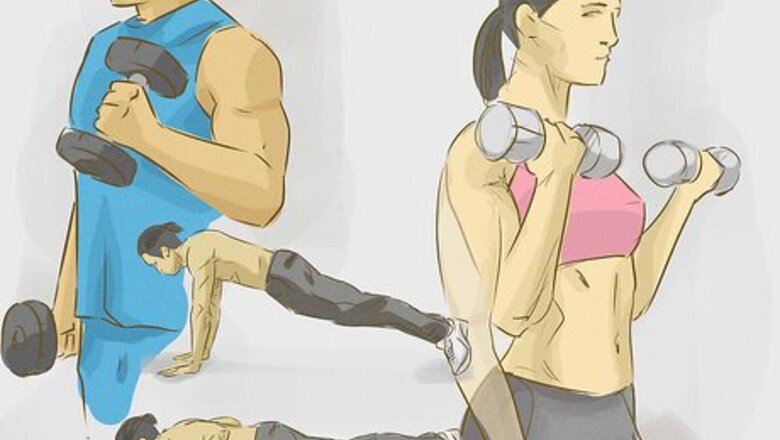
views
Building Muscle in Your Arms

Work your biceps. This is the 2-part muscle at the top of your upper arm connecting your shoulder to your elbow joint. Your biceps help you curl your foreman towards your body and upwards.Toning this muscle gives a toned look on the front of your arm. Try the following exercises: Bicep curls. Stand straight with a dumbbell in each hand. Keep elbows close to your body and keep your palms facing forward. Keeping the upper arms stationary, lift the weights towards your body while contracting your biceps. Continue to raise the weights until the dumbbells are at shoulder level. Slowly release your arms back down until hands are by your sides. Hammer curls. Stand up straight with a dumbbell in each hand. Your palms should be facing your body. Lift the weight forward until the the weight is at shoulder level. Slowly release your arms back down to your sides.

Strengthen your triceps. This 3-part muscle at the back of your upper arm connects the back of the shoulder to your elbow joint. The tricep helps your arm extend overhead or in backwards motion. Toning the triceps helps prevent the look of "flabby arms". Try the following exercises: Tricep push ups. This exercise is similar to a regular push up except for the position of the elbows. Start by getting down into a plank position, with arms straightened underneath your shoulders. Lower your body until your chest is a few inches from the floor. Your elbows and arms should be flush with the side of your body. Push your body back up towards the starting position in a quick motion. Keep your abs and back muscles tight throughout this exercise. Push-ups. Get down into a plank position, with arms straightened underneath your shoulders. Lower your body until your chest is a few inches from the floor. Your elbows should be pointing outward away from your body. Push your body back up towards the starting position in a quick motion. Keep your abs and back muscles tight throughout this exercise. Tricep dips. With your back facing a bench or stable chair, place your hands on the edge of the chair/bench with fingers facing away from the chair/bench. Arms should be straight and locked in place. Slowly lower yourself downward until your upper arm is parallel to the floor. Your elbows should stay close to your body. Push your body back up using your triceps to straighten your arms as they were in the starting position. Tricep extensions. Lie on a bench or floor while holding two dumbbells directly in front of you. Your arms should be fully extended and perpendicular to the floor. Your palms should be facing your shoulders and the elbows should be tucked in close to your body. Slowly lower the weight until the dumbbells are near your ears. Bring the weight back up until your arms are fully extended.
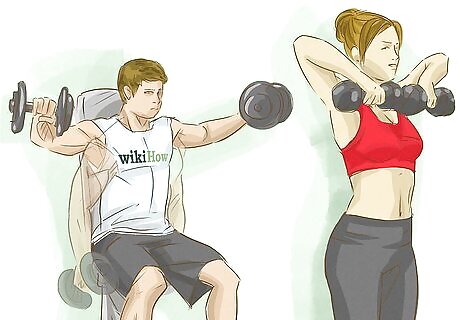
Tone your deltoids. This muscle attaches to the top of your shoulder and to the middle of your upper arm bone (the humerus). It helps you raise your arm out to the side, forward and back. Toning this muscle helps provide a very defined looked to the upper part of your arm. Try the following exercises: Lateral raises. Hold a dumbbell in each had with your palms facing your body. Lift the dumbbells to your side making sure there is a slight bend at your elbows. Lift the weights up, making sure your arms are aligned, until your arms are parallel to the floor. Slowly lower the dumbbells back down to your sides. Front rows. Grab a dumbbell in each hand with palms facing your body. Lifting the dumbbells up to your chin - elbows should end up pointing away from your body. Keep the dumbbells close to your body as you move. Slowly release and return to starting position. Push-ups.
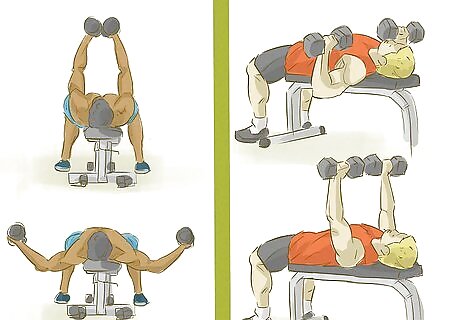
Include chest exercises. Doing plenty of push ups and planks can do wonders for the area near your underarms next to your chest. Toning all the muscles around your arms will give you a more thorough workout and the most defined look. Try exercises like these: Chest-press. Lay flat on your back holding a dumbbell in each hand. Raise arms up at shoulder length and keep arms straight and locked. Slowly lower the weights down to your chest, with your palms turned to face your feet and your elbows pointing away from your body. Then lift weights back up until arms are completely straight. Chest flys. Lay flat on your back holding a dumbbell in each hand. Keep arms flat out to the sides with your palms facing the ceiling. While keeping your arms mostly straight (with a slight bend in the elbow), bring your arms together until your hands meet in front of you with arms full extended. Slowly lower your arms back down to your sides. Do push ups
Forming an Exercise Plan
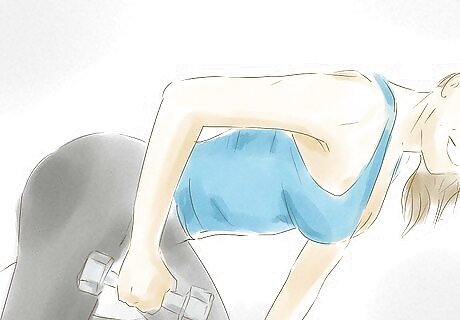
Perform many reps with light weights. Since your goal is to lose fat without bulking up your arm muscles too much, it's best to start with fairly light weights. You should be able to perform an exercise for at least 15 to 20 reps without gasping for air or feeling your muscles burn excessively. This trains your endurance, so you stay fit but do not develop large muscles.
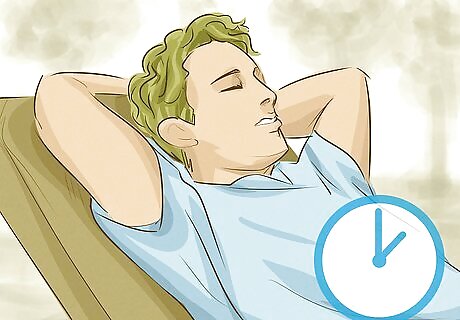
Rest for 30 to 60 seconds between sets. Your goal is strong but skinny, so you shouldn't be pushing your limits. If you feel the need to rest for more than a minute, move down to lighter weights.

Perform two or three sets for each muscle group. For pure endurance training, you could do 2 sets of 20 bicep curls, then move on to 2 sets of 20 tricep dips. If you wouldn't mind building up a little arm muscle, try 2 sets of 15 or 3 sets of 12 with somewhat heavier weights.

Divide your time between each muscle group. For best results, exercise each muscle group in two different sessions per week. For example, exercise your biceps and triceps on Monday; your triceps and deltoids on Wednesday; and your deltoids and biceps on Friday.
Including Other Exercises to Tone Arms

Sign up for a beginners weight lifting class or a session with a personal trainer. Learning proper form is essential to lifting weights. If you're unsure of the proper form or exercises to help build and tone muscle, learning from an expert may be helpful. Many gyms offer free classes to members. Try attending an intro to weight lifting class. These classes are geared towards beginners and will have a fitness professional there to provide hands on coaching. Your gym may also offer sessions with a personal trainer. You may even be able to get a few free when you first sign up for a gym membership. However, there are many personal trainers that work on a consultant basis and can offer individual help at a local gym, your home or other facility.
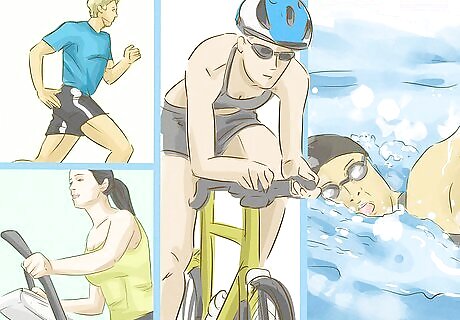
Include adequate cardio exercises each week. Spot-training or losing weight in one specific area of your body is impossible. However, including regular cardio can help you lose weight, decrease body fat and achieve thinner or smaller arms. It's recommended to include at least 150 minutes or 2.5 hours of cardiovascular activity each week. To burn more fat or to lose more weight include more exercise or increase the intensity. Include exercises such as: walking, jogging/running, using the elliptical, swimming or aerobic classes. Find cardio exercises that you enjoy doing, such as running, swimming, biking, or doing HIIT routines in your home. The best way to stay motivated and become fit is by choosing exercises that you want to do.
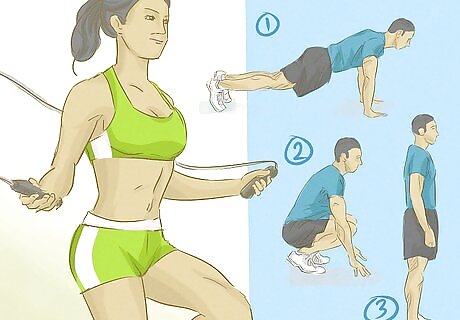
Consider doing body weight exercises that tone and burn fat at the same time. Intervals with dynamic exercises that work your entire body can reduce inches on arms, waist, hips, legs and more. In addition, intervals help burn calories which can decrease body fat and support the look of smaller arms. The following are good exercises to do in intervals of 1 to 2 minutes with 15 to 30 seconds of rest in between: Jump rope. High impact exercise like jumping and using your arms to turn the jump rope mean that this exercise burns a lot of calories. Start with 20 seconds and work your way up to 1 minute or more. Rest and repeat 3 times. Do burpees. Stand with your arms high in the air. Place your arms by your feet and jump back into a plank position. Jump back to a squat and stand, raising your arms. Do this for 30 seconds, rest and repeat 3 times. For added benefit, do a push up when you land in the plank position.
Eating for Toned Arms
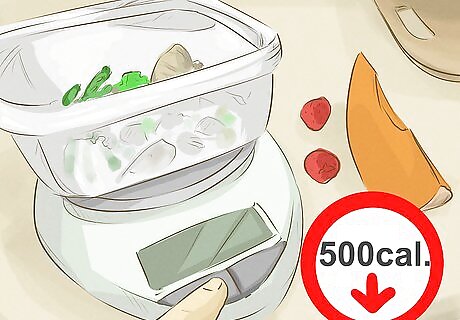
Watch calories or portions. If you feel that weight loss will help aid in toning your arms and helping them get smaller, you will need to watch calories or portion sizes of foods to help you reach your goal. Losing weight will require eating a little less or watching your total calorie intake each day. Safe weight loss is considered 1-2 pounds per week. You'll need to cut out or burn off about 500 calories a day to reach this goal. To cut back on portions, try using smaller plates, bowls or serving utensils. You may also find it handy to purchase measuring cups or a food scale to help make sure your portions are accurate.
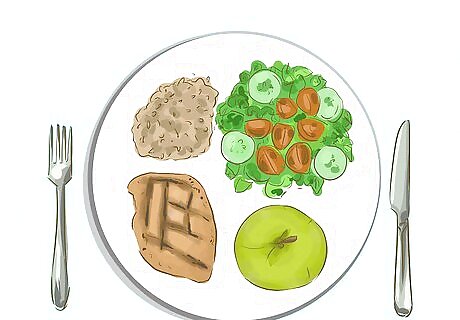
Eat a well-balanced diet. Healthy weight loss depends on a well-balanced diet. Including all five food groups into most of your meals throughout the week is a key component of a healthy and well-balanced diet. Consume lean protein at each meal and snack. One serving of lean protein (like poultry, pork, seafood, dairy or tofu) is about 3-4 ounces or 1/2 cup. Include a 5-9 servings of a variety of fruits and vegetables. One serving of fruit is 1/2 cup or 1 small piece of fruit and one serving of vegetables is 1 cup or 2 cups of leafy green vegetables. Also try to consume whole grains when choosing a grain food in your diet. All grains can be part of a healthy diet, but whole grains provide more nutrients than refined grains. Include 2-3 1 ounce or 1/2 cup portions each day.
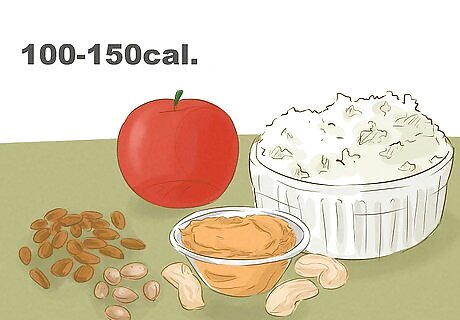
Choose healthy snacks. Snacks can be a part of a healthy diet, but should be monitored - especially when your goal is weight loss. Snacks should be between 100-150 calories per snack if your ultimate goal is weight loss. Snack only if you need to. For example, it's before a workout or you're starving and your next meal isn't for another 3 hours. Examples of healthy snacks include: 1/4 cup of nuts, 1 ounce whole grain crackers and peanut butter or 1/2 cup cottage cheese and fruit.
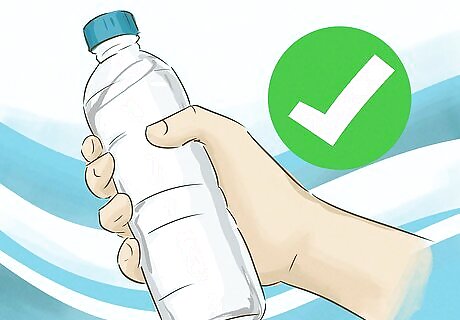
Drink adequate water. Fluids are important for a healthy diet, weight loss and exercise. Being dehydrated can lead to weight gain and impede athletic performance. Everyone's fluid needs are different, but a good rule of thumb to follow is 64 oz or 8 glasses of water daily. Ideally you shouldn't feel thirsty throughout the day and your urine should be clear by late afternoon or evening.
















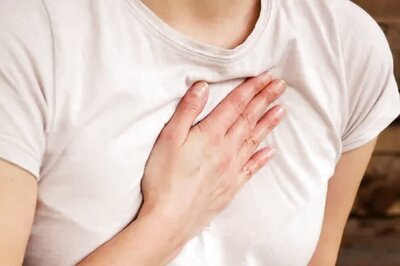


Comments
0 comment